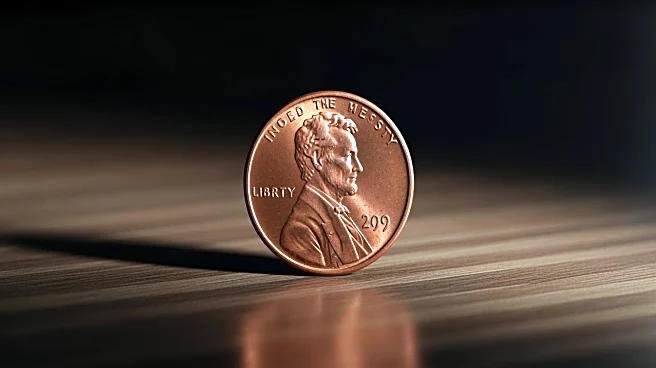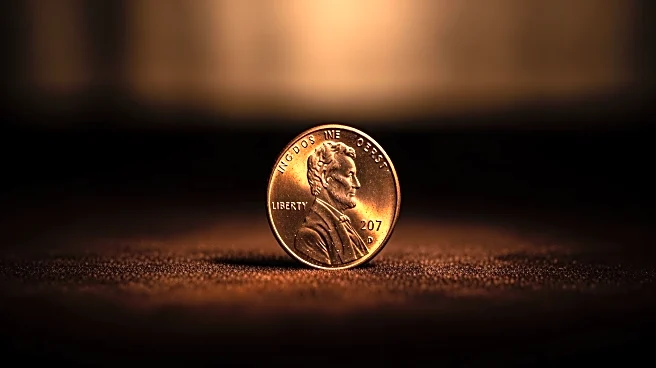What's Happening?
The US Mint has concluded over two centuries of penny production, with the final five pennies featuring a unique omega symbol. These ceremonial coins, struck at the Philadelphia Mint, are distinguished
from standard coins and are set to be auctioned by the Treasury Department. The omega symbol, representing the end of the penny's production, is located beneath the word Liberty on the Lincoln image. Speculation suggests these coins could be valued between $2 million and $5 million each, attracting significant interest from collectors. The penny, first issued in 1793, has been a staple of US currency, with its design evolving over time to feature President Abraham Lincoln.
Why It's Important?
The cessation of penny production marks a significant shift in US currency history, reflecting broader economic trends towards digital transactions and away from cash. The auction of the final pennies highlights the cultural and historical value placed on currency, with collectors eager to acquire these rare items. The potential high auction prices underscore the demand for unique and historically significant coins, which can serve as investment opportunities. This development also raises questions about the future of other low-denomination coins, such as the nickel, in an increasingly cashless society.
What's Next?
The Treasury Department plans to auction the final five pennies, although specific details about the auction are yet to be announced. As collectors prepare for potential bidding wars, the outcome of the auction could set a precedent for the valuation of rare coins in the future. The discontinuation of penny production may prompt discussions about the practicality and cost-effectiveness of other coins, influencing future decisions by the US Mint. Stakeholders, including collectors, economists, and policymakers, will be closely monitoring the auction and its implications for the coin market.
Beyond the Headlines
The end of penny production raises broader questions about the role of physical currency in a digital economy. As cash usage declines, the cultural and historical significance of coins becomes more pronounced, potentially increasing their value as collectibles. The auction of the final pennies also highlights the intersection of economics and culture, where currency serves not only as a medium of exchange but also as a symbol of national heritage. This development may encourage further exploration of the ethical and social implications of transitioning to a cashless society.














